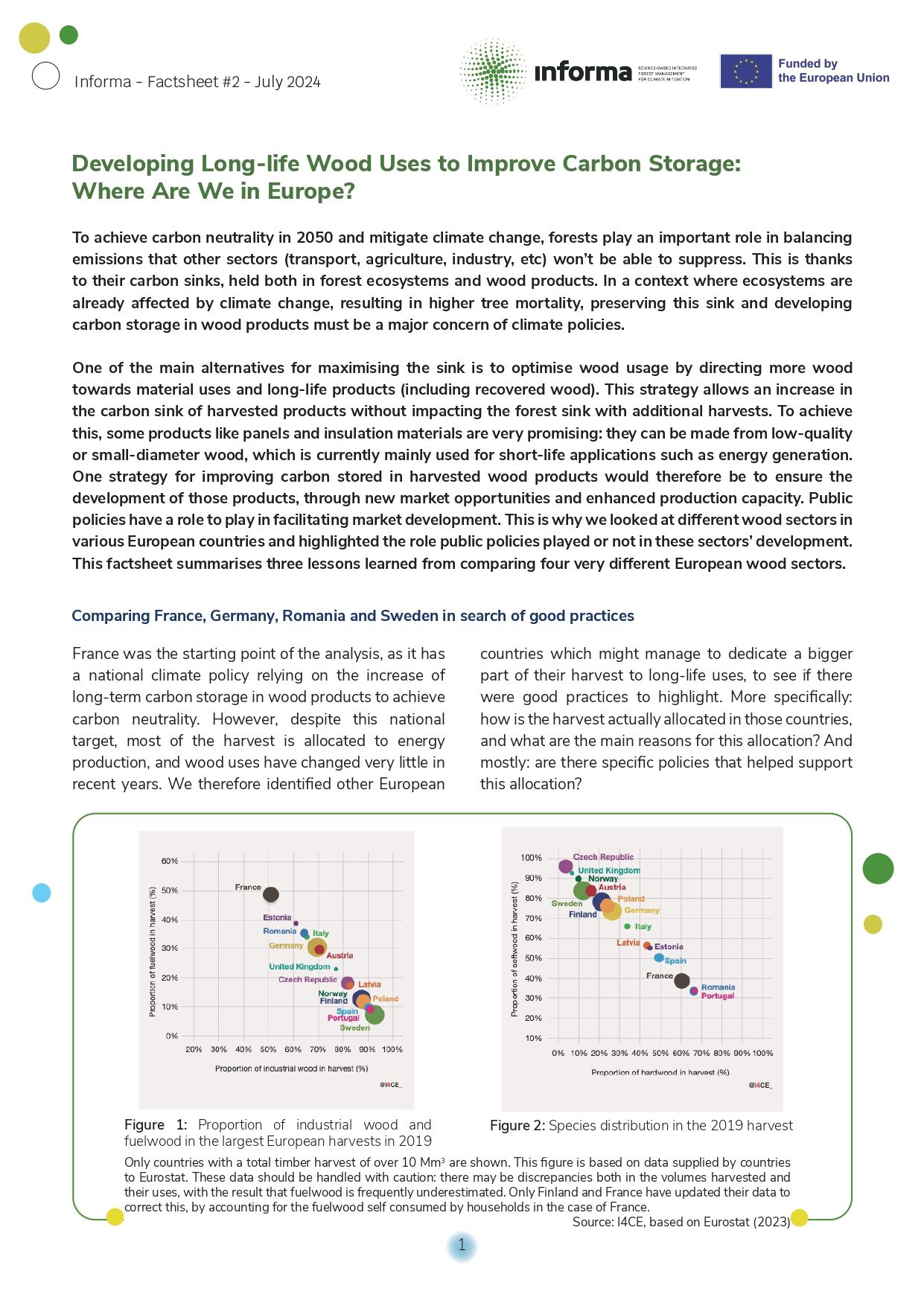Developing long-life wood uses to improve carbon storage: where are we in Europe? Key takeaways
Find about the full report here
Directing more wood towards long-life products such as panels and insulation materials can help us maximise carbon sinks without increasing forest harvests. That’s because these products store carbon for a longer periods of time in form of long-lasting construction and renovation materials. But for this to happen in practice, more market opportunities and production capacity are needed. How can public policies help?
Our latest study dives into the wood sector policies of France, Germany, Romania, and Sweden to find out. These are our main takeaways:
- Subsidizing long-life wood uses can help boost demand and production. Germany, for example, subsidized bio-based insulation (including wood fibre insulation) to cover half of the additional cost of the original product. This strategy led the volume of bio-based insulation products entering the German market to a fifty-fold increase, which ultimately allowed subsidies to be discontinued while maintaining production.
- Prioritizing wood uses through public policies helps hit specific targets. Different policy choices have encouraged the development of panel production, and others were more geared towards energy or the production of paper pulp. In practice, these other wood uses compete for the same resources as certain long-life wood products. Thus, there is a need to establish trade-offs and prioritise certain uses.
- Developing the furniture sector boosts the supply of semi-finished products. Although furniture does not store carbon for as long as construction and renovation materials, the furniture industry can help to scale up the production of these products, which can also be used in construction.



